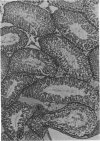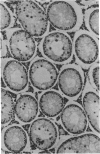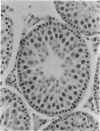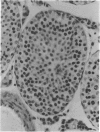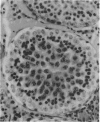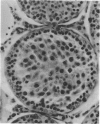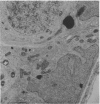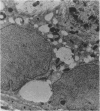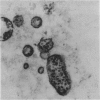Abstract
The testicular effects produced by di(2-ethylhexyl) phthalate (DEHP) in the rat, characterized by a decrease in the relative organ weight and histological changes in the seminiferous tubules, can also be produced by di-n-butyl, di-n-pentyl and di-n-hexyl phthalates. The corresponding monoesters of these compounds, formed in vivo as a result of the action of nonspecific esterases in the intestinal mucosa and other tissues, were equally effective in inducing testicular damage. Phthalate-induced testicular injury was accompanied by a decrease in the zinc content in the gonads and in increased urinary excretion of this element. Exposure of preparations of rat seminiferous tubule cells in culture to monophthalates capable of producing testicular injury resulted in a dose-related detachment of germinal cells from Sertoli cells in a manner similar to the effect seen in the intact animal. This in vitro system may find application in the elucidation of the toxic mechanisms involved in phthalate-induced testicular injury and in screening compounds likely to act in a manner similar to phthalates.
Full text
PDF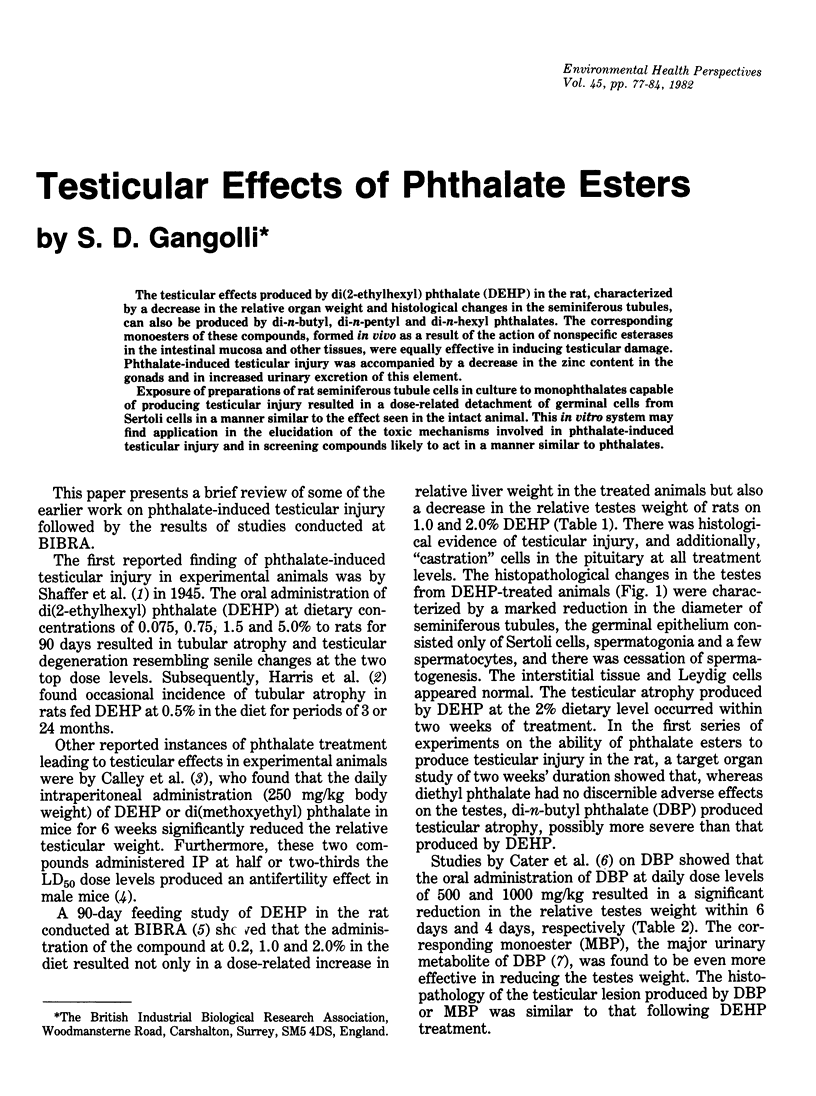
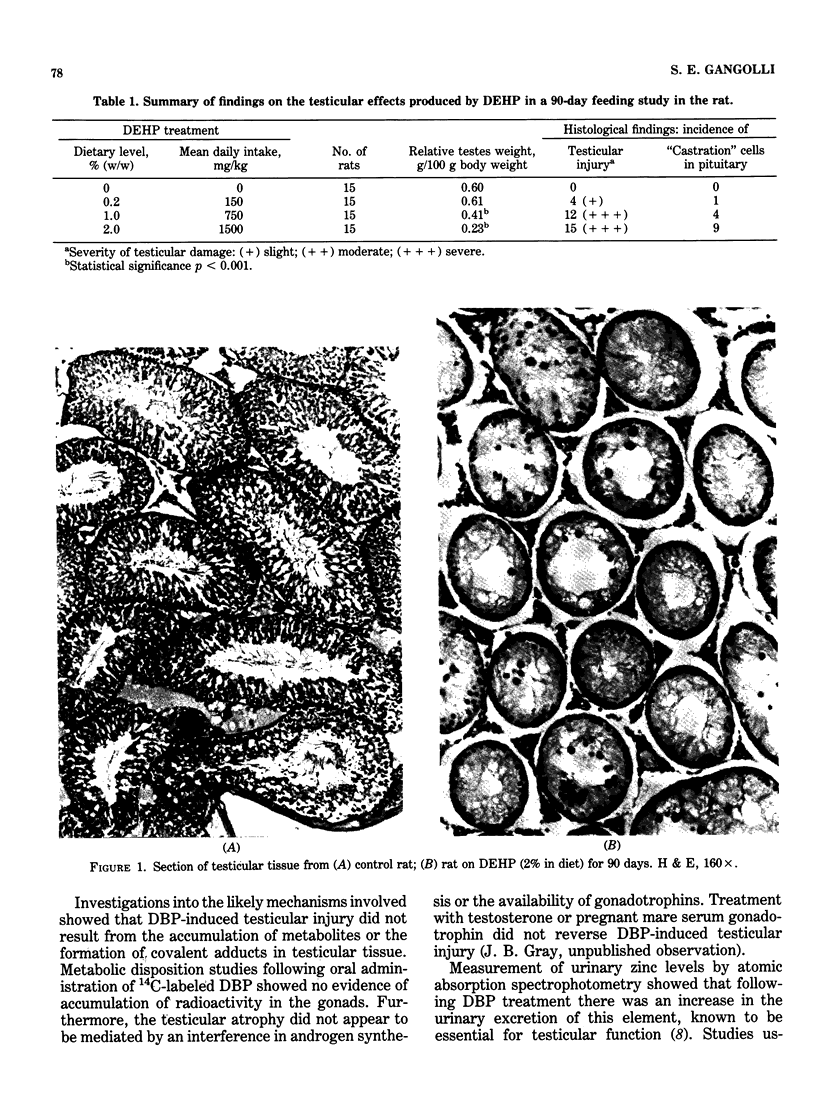
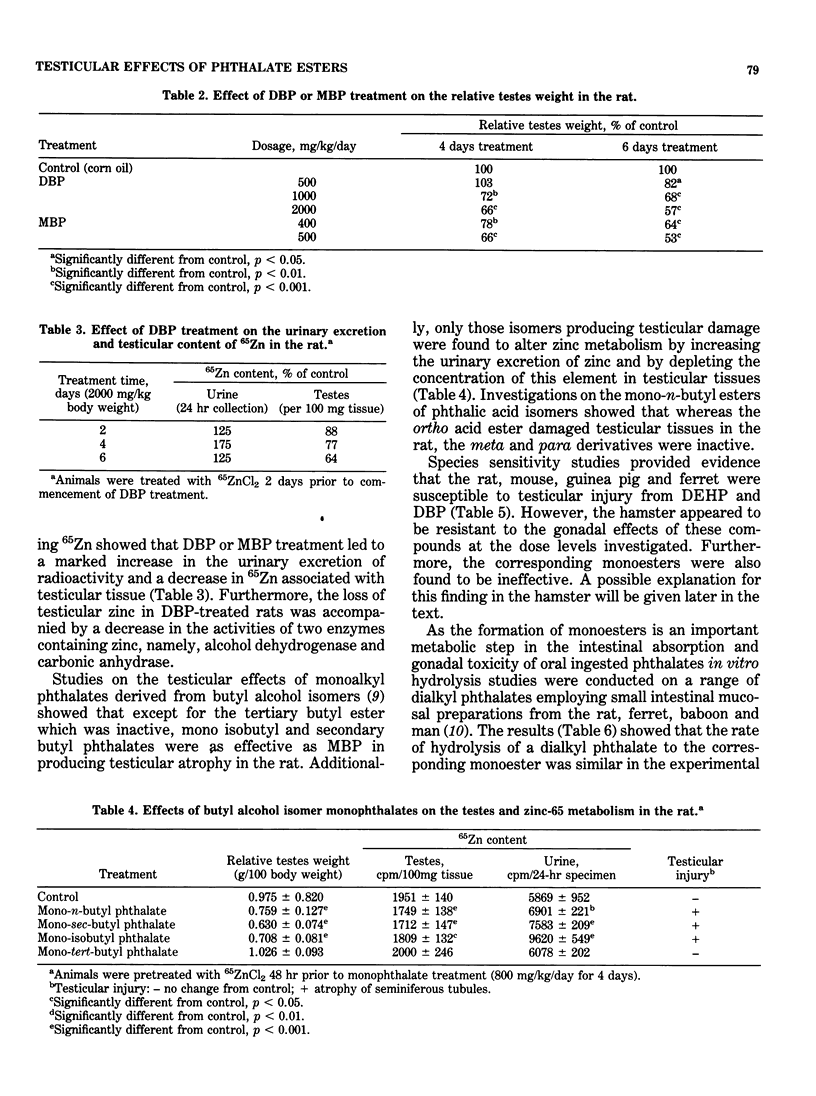
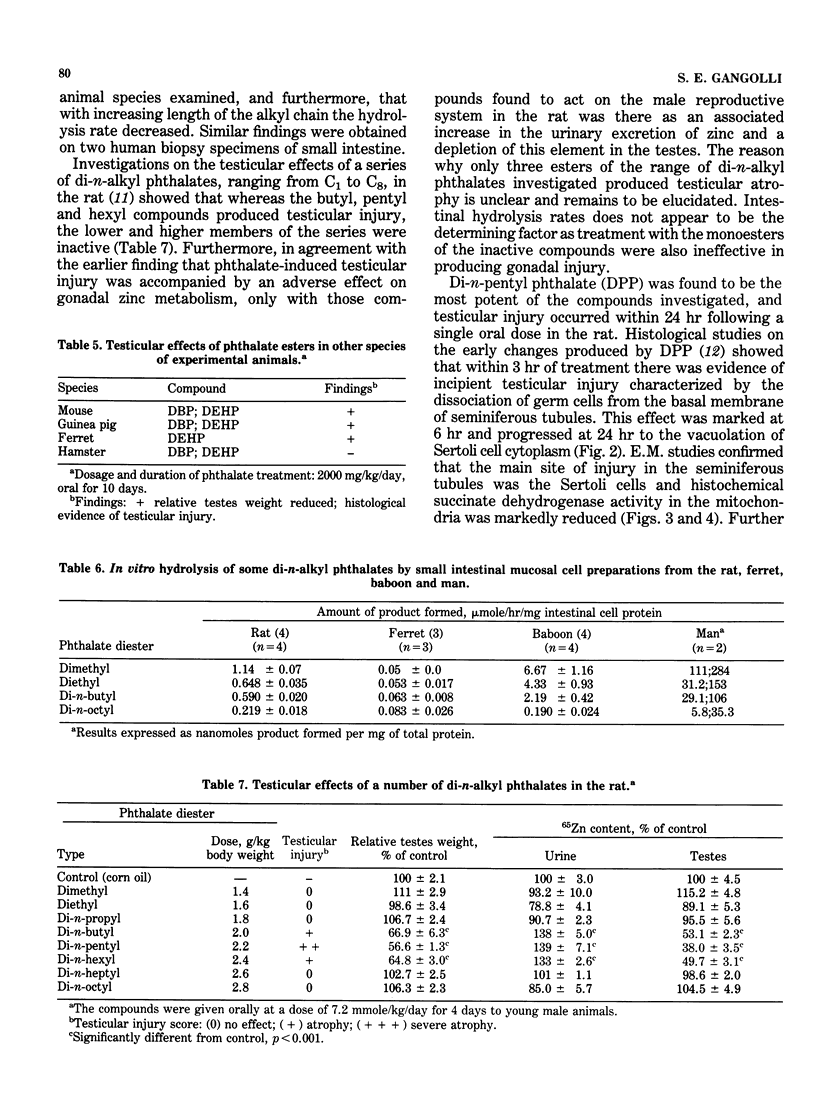
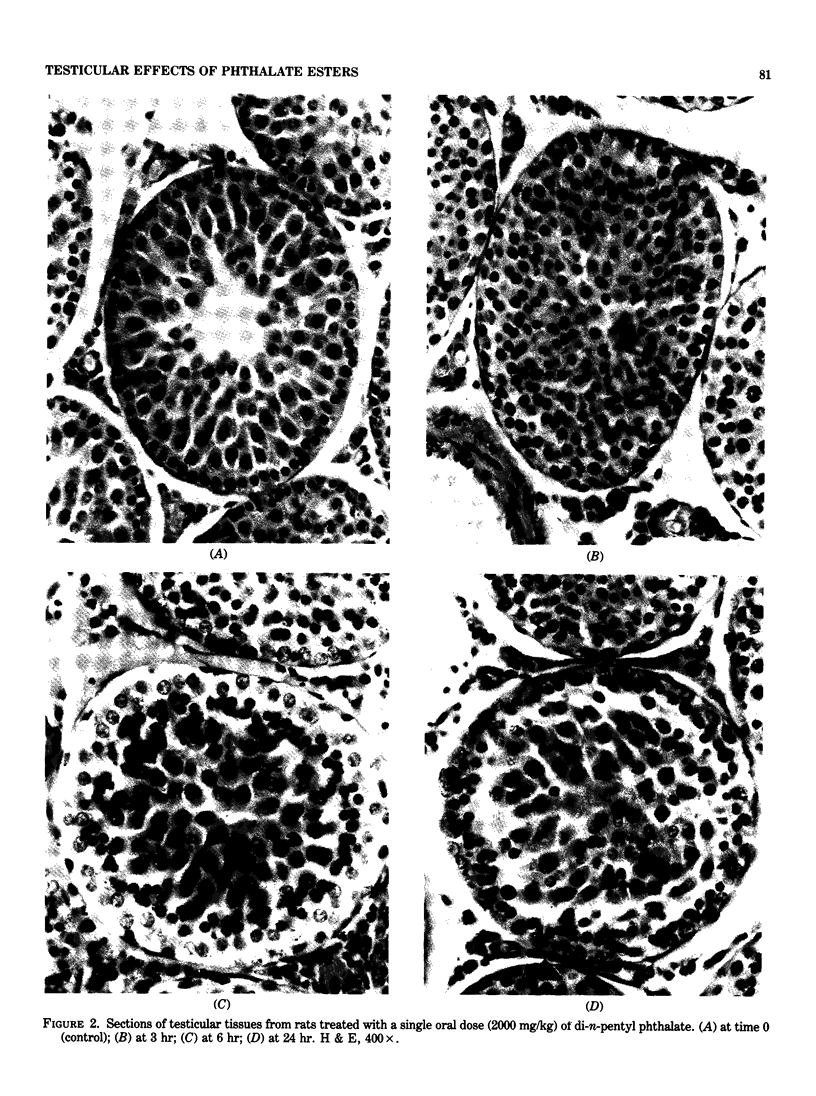
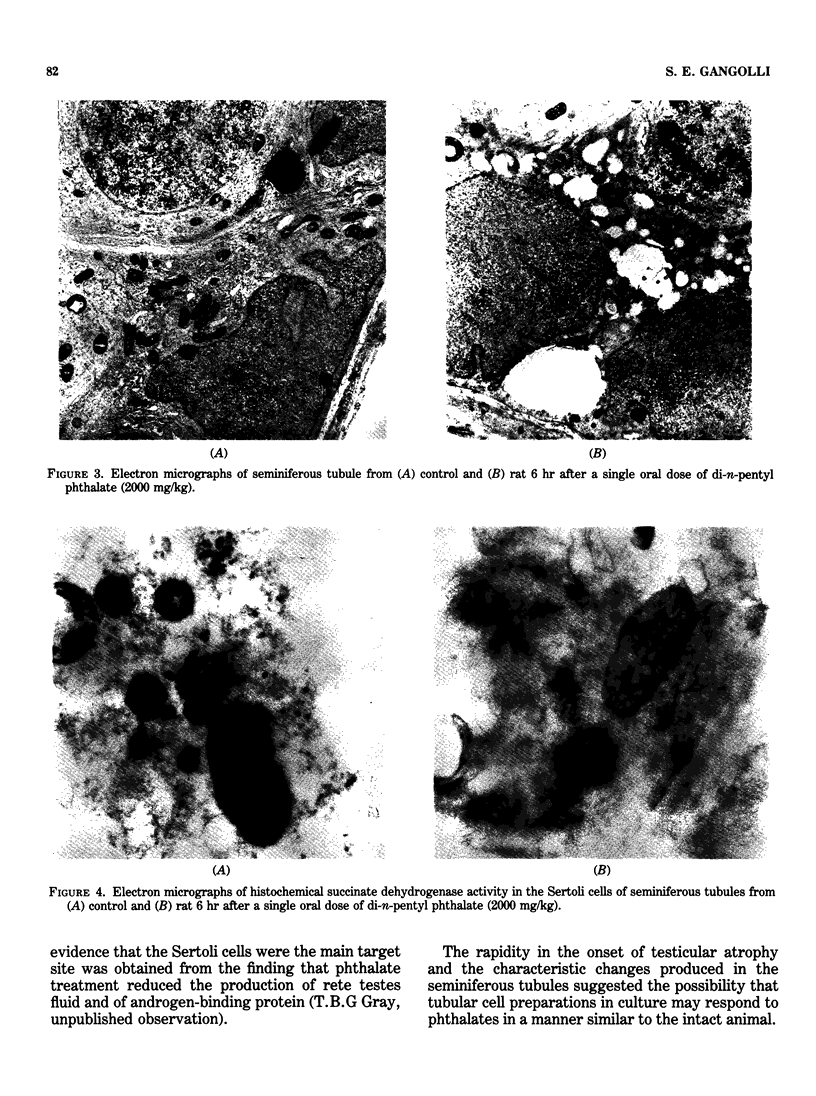
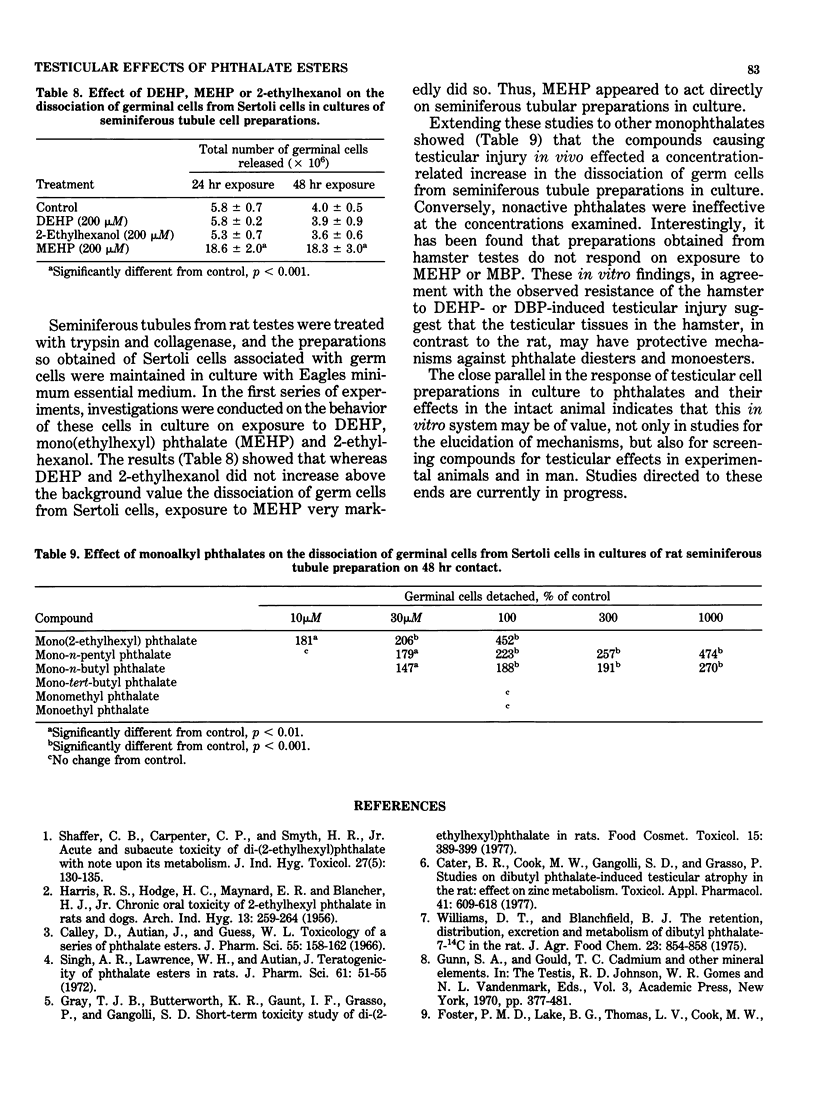

Images in this article
Selected References
These references are in PubMed. This may not be the complete list of references from this article.
- Calley D., Autian J., Guess W. L. Toxicology of a series of phthalate esters. J Pharm Sci. 1966 Feb;55(2):158–162. doi: 10.1002/jps.2600550206. [DOI] [PubMed] [Google Scholar]
- Cater B. R., Cook M. W., Gangolli S. D., Grasso P. Studies on dibutyl phthalate-induced testicular atrophy in the rat: effect on zinc metabolism. Toxicol Appl Pharmacol. 1977 Sep;41(3):609–618. doi: 10.1016/s0041-008x(77)80014-8. [DOI] [PubMed] [Google Scholar]
- Foster P. M., Foster J. R., Cook M. W., Thomas L. V., Gangolli S. D. Changes in ultrastructure and cytochemical localization of zinc in rat testis following the administration of di-n-pentyl phthalate. Toxicol Appl Pharmacol. 1982 Mar 30;63(1):120–132. doi: 10.1016/0041-008x(82)90031-x. [DOI] [PubMed] [Google Scholar]
- Foster P. M., Lake B. G., Thomas L. V., Cook M. W., Gangolli S. D. Studies on the testicular effects and zinc excretion produced by various isomers of monobutyl-o-phthalate in the rat. Chem Biol Interact. 1981 Mar 1;34(2):233–238. doi: 10.1016/0009-2797(81)90134-4. [DOI] [PubMed] [Google Scholar]
- Foster P. M., Thomas L. V., Cook M. W., Gangolli S. D. Study of the testicular effects and changes in zinc excretion produced by some n-alkyl phthalates in the rat. Toxicol Appl Pharmacol. 1980 Jul;54(3):392–398. doi: 10.1016/0041-008x(80)90165-9. [DOI] [PubMed] [Google Scholar]
- Gray T. J., Butterworth K. R., Gaunt I. F., Grasso G. P., Gangolli S. D. Short-term toxicity study of di-(2-ethylhexyl) phthalate in rats. Food Cosmet Toxicol. 1977 Oct;15(5):389–399. doi: 10.1016/s0015-6264(77)80003-5. [DOI] [PubMed] [Google Scholar]
- HARRIS R. S., HODGE H. C., MAYNARD E. A., BLANCHET H. J., Jr Chronic oral toxicity of 2-ethylhexyl phthalate in rats and dogs. AMA Arch Ind Health. 1956 Mar;13(3):259–264. [PubMed] [Google Scholar]
- Lake B. G., Phillips J. C., Linnell J. C., Gangolli S. D. The in vitro hydrolysis of some phthalate diesters by hepatic and intestinal preparations from various species. Toxicol Appl Pharmacol. 1977 Feb;39(2):239–248. doi: 10.1016/0041-008x(77)90157-0. [DOI] [PubMed] [Google Scholar]
- Singh A. R., Lawrence W. H., Autian J. Teratogenicity of phthalate esters in rats. J Pharm Sci. 1972 Jan;61(1):51–55. doi: 10.1002/jps.2600610107. [DOI] [PubMed] [Google Scholar]
- Williams D. T., Blanchfield B. J. The retention, distribution, excretion, and metabolism of dibutyl phthalate-7-14 C in the rat. J Agric Food Chem. 1975 Sep-Oct;23(5):854–858. doi: 10.1021/jf60201a047. [DOI] [PubMed] [Google Scholar]



